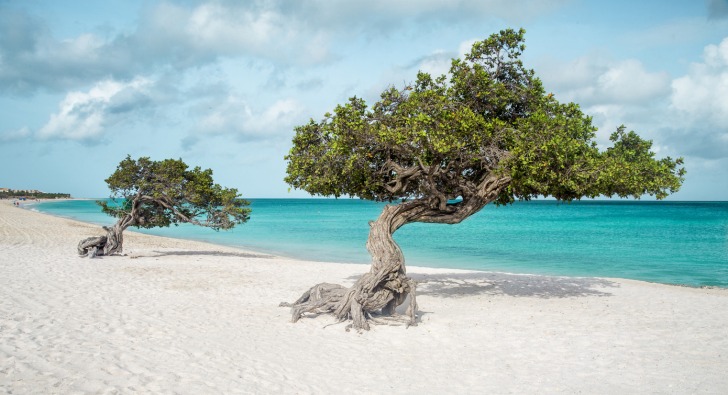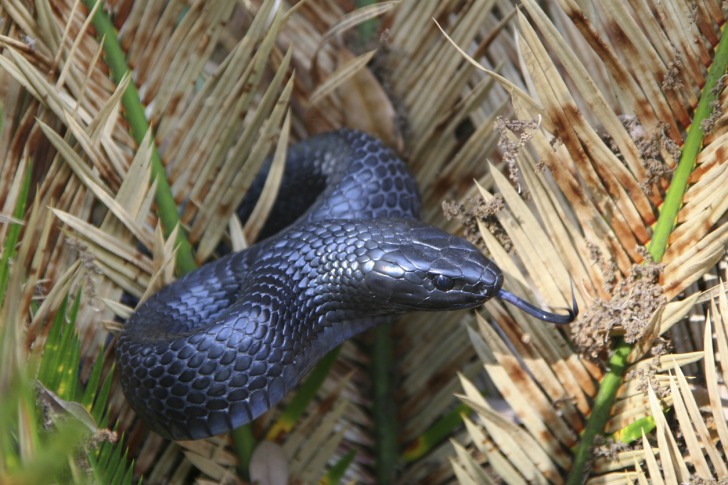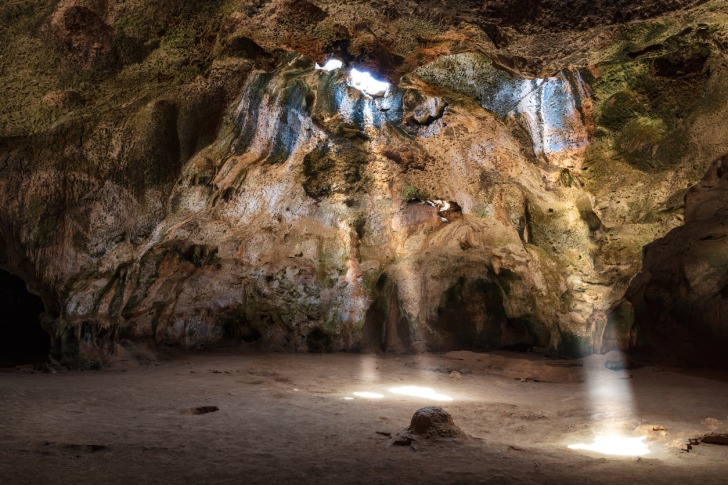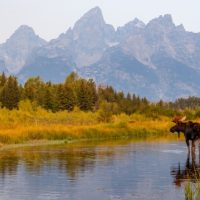Snakes, cold-blooded and carnivorous, can be found on every continent on Earth except Antarctica.
There are over 3,700 snake species.
All are predators, but not all are poisonous.
They tend to avoid people feasting on small animals, fellow reptiles, and birds.
But it is safe to say that you will never see a snake dining on a salad.
When visiting Aruba, there is a slight chance that a snake may be seen.
Snake encounters are rare in Cura Cubal.
But in the protected Arikok National Park, they are common.
Overall, the snakes in Aruba are loners.
Some species, like the island Boa Constrictor, don’t bite, but they are dangerous in the right conditions.
So, like with all things in the wild, it is a good idea to respect these limbless creatures and their territory.
To snakes, you are most likely the intruder.

Contents
So…Are There Snakes in Aruba?
Aruba, a small island nation off the northern coast of Venezuela, is prized for its tropical beaches and crystal blue waters.
A Caribbean paradise, this Kingdom of the Netherlands constituent is home to three basic types of snakes: non-venomous, mildly venomous, and deadly.
Snake Species in Aruba
Aruba has three prominent reptilian species.
These are known locally as Santanero, Cascabel, and Boa.
As a visitor to the island, a little knowledge can go a long way and may help distinguish the most deadly snakes.
Baker’s Cat-eyed Snake
A common inhabitant of the island, adults ‘Santanero’ are less than two feet long.
They can be recognized by the 15 tannish or brown patches along their length.
Their name derives from the distinct head and vertical elliptic pupil, resembling a cat’s eye.
Santanero loves the night.
By day, they prefer dark shelters under stones and rocks.
Happy in the underbrush, they may also be found in city gardens and planted fields.
Cat-eyed snakes are relatively shy.
But, if surprised, they may release a skunk-like smell.
They hunt at night for cockroaches, lizards, and mice, subduing prey with a mild venom.
A bite from this snake causes aches and pains but is rarely fatal.
Aruba Island Rattlesnake
The most famous reptilian inhabitant, Cascabel, is native to the island and found nowhere else on Earth.
Crotalus Durissus grows to an average of 40 inches (3.5 feet) and has distinct triangular heads and a tell-tale rattle-tipped tail.
The island ‘rattler’ can live up to 20 years.
In addition to the sound, ‘Cascabel’ is easy to identify, having a light pink to dark tan color with distinct contrasting colored diamond shapes down its back.
The polygon shapes range from white to dark brown to grey.
Aruba’s famous rattlesnake, like most of its cousins, usually only strikes when provoked.
It prefers secluded rocky terraces or sandy terrain.
The snake hunts rodents and birds using its excellent eyesight and heat sensors.
Their bite is deadly, and prey is usually swallowed whole.
If a human is bitten, immediate medical attention and anti-venom is needed.
Unique to the island, the Aruba Island Rattlesnake is red-listed as a critically endangered species.
Recent counts estimate only 230 snakes are left in the wild.
Island expansion, aloe agriculture, and charcoal industries that support the economy have also encroached on the reptile’s habitat.
In 2000, 34 acres, Aruba established the Arikok National Park to protect the snake and other island flora and fauna.
Boa Constrictor
Known to islanders by its nickname, ‘Boa,’ this variety of red-tailed reptiles is endemic to the Caribbean – Aruba, St. Croix, and Puerto Rico.
Boa’s are large snakes that come in a variety of colors depending on their environment.
They are often sandy-beach tan or tree-bark brown.
They are even yellow or deep red.
Female boas are larger and longer, but the average size is 160 inches (13.5 feet).
Always found in tropical climates, it prefers trees and nests.
The Boa Constrictor hunts small prey and is classified as an ambush predator.
It can also swim, moving with a speed that defies its size.
Boas can live up to 40 years, and while they hunt by constriction, they will bite if provoked.

Is it Safe to Go on a Trek in Aruba?
The call of this tropical paradise is unmistakable.
The island’s beauty, whether it is the national parks, secluded coves, or rocky beaches, is perfect for exploration.
Luckily, the snakes of Aruba are known for their ‘live and let live’ approach to both locals and visitors.
They prefer to keep to themselves – making the island relatively safe.
But as with all wild animals, a bit of caution is recommended.
Interesting Snake Facts in Aruba
Aruba is home to one of the rarest snakes worldwide.
The Crotalus Durissus, or Island Rattlesnake, lives in a 15.5 square mile of habitat.
But occasionally, they are also spotted on Mount Jamota, 617 feet above sea level.
3 Safety Tips for Exploring Nature in Aruba
You do you.
Even the most venomous island snakes like to be left alone.
They usually only strike if startled or provoked.
Beware of rocky terrain
Aruban snakes like to rest under rocky overhangs and underbrush.
Stay still and quiet.
Back away slowly.
Don’t scream or move suddenly, and keep the creature in your sight until you are safely away.
Shoes and protective clothing are suggested while trekking in the protected park, as this is a known snake habitat.
Move slowly, don’t scream, and don’t run.
If you are going to be in known snake areas, carrying a basic snakebite kit and keeping emergency medical numbers handy is good preparation.
Summary
Aruba is a beautiful island that welcomes roughly 800,00 visitors annually, and snakes are often a concern.
Aruba has only three snake species.
Surprisingly, not all snakes are indigenous to the island; the Boa Constrictor is the most recent immigrant.
It was first spotted on the southern Caribbean island in 1999.
All species tend to keep to themselves.
However, with human encroachment into reptilian habitats, the snakes have adapted.
Snake encounters in the cities of Aruba are minimal but always a concern.
Aruba Safety Overview
READ THE FULL REPORT: Aruba Safety Review
Safety Index:
- OVERALL RISK: LOW
- TRANSPORT & TAXIS RISK: LOW
- PICKPOCKETS RISK: LOW
- NATURAL DISASTERS RISK: LOW
- MUGGING RISK: LOW
- TERRORISM RISK: MEDIUM
- SCAMS RISK: LOW
- WOMEN TRAVELERS RISK: LOW
Frequently Asked Questions
How many people die every year from snake bites in Aruba?
Aruba has one deadly venomous snake, the red-tailed rattlesnake.
But because of its endangered status, very few bites are reported annually.
No deaths are on record for the past several years.
Should you cut open a snake bit to remove the venom?
The old USA Boy Scout manual recommended sucking out the venom, followed by a tourniquet after a poisonous snake bit.
Now science knows better.
By cutting the wound, it is possible to spread the venom.
Do Aruba's snakes swim?
The Aruban Boa Constrictor is an excellent and powerful swimmer and can be found near the shore or in caves and lagoons.











